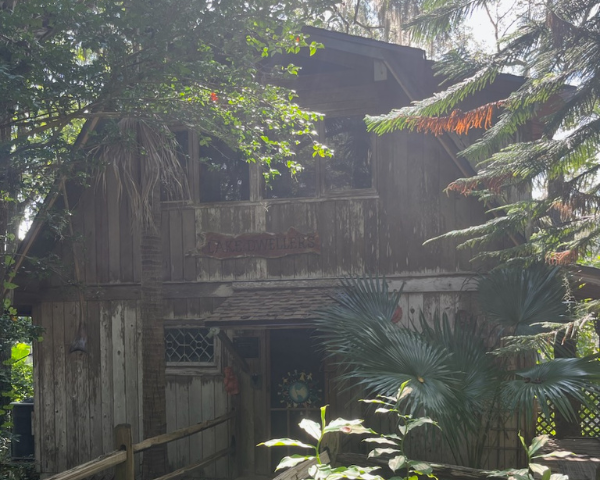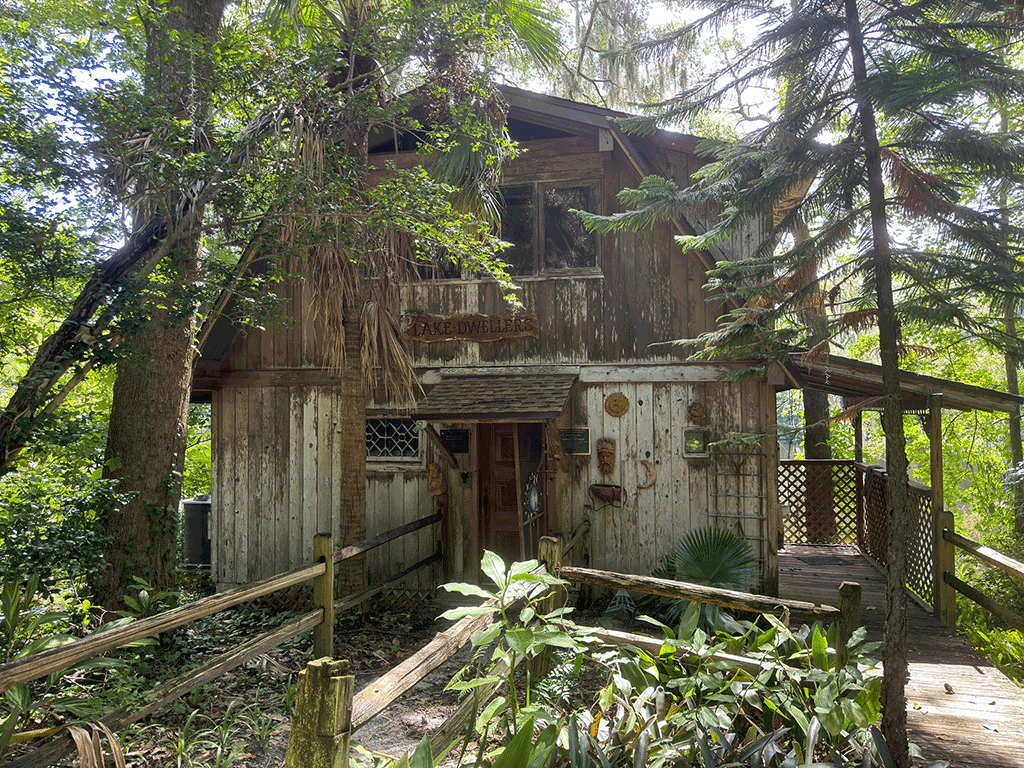Beluthahatchee Park
1523 SR 13 N
Fruit Cove,FL 32259
HOURS: Dawn to dusk
Beluthahatchee Park is a 4 acre park located within the 70-acre tract of land purchased by Stetson Kennedy in 1948 after the 18 acre Beluthahatchee Lake was created by impounding Mill Creek in 1945. This lake meanders through a natural basin and is surrounded by high bluffs, currently owned by the Lake Dwellers Association, a non-profit Florida corporation formed by the lakefront residents.
AMENITIES INCLUDE:
- Nature trails
- Picnic pavilions
- Canoe dock
- Restrooms
- Parking
Visitor and Recreational Opportunities
Through the acquisition of the Beluthahatchee Park, St. Johns County continues the legacy of Stetson Kennedy and his vision for its future as a literary landmark and to carry forward the shared Kennedy/Guthrie three-fold legacy of devotion to human rights, mother earth and the traditional culture.
Vegetation and Species
The perimeter of the property is surrounded by a heavy canopy of native vegetation overstory consisting of mixed coniferous and hardwood defined by live oak, laural oak, water oak, long leaf pine and cabbage palms. The native vegetation understory consists of saw palmetto, southern magnolia, water and laural oak. The lake native vegetation overstory consists of pignut hickory, sweet gum and bald cypress and the understory consists of sweet gum, southern magnolia and swamp dogwood.
Much of the perimeter native vegetation has been preserved, despite intensive development around its border. The Beluthahatchee enclave provides wildlife habitat and continues to serve as a rookery and roosting place for ospreys, eagles, snowy egrets, tri-colored heron, white ibis, little blue heron, wood storks, black-crow night herons, wood ducks, anhingas, purple gallinules, bronze grackles, red-winged blackbirds and many other species.
Making and Preserving History
History was made at Beluthahatchee during the latter half of the 20th century by both Kennedy and his frequent house guest, America’s legendary folk balladeer Woody Guthrie (“This Land is Your Land,” etc.). The final draft of Woody Guthrie’s autobiography, Seeds of Man, and 80 songs were composed while Guthrie was in residence at Beluthahatchee. Almost all of which had to do with the “sense of place”, and human rights issues inspired by Kennedy’s writings. The 2003 nomination by the Florida Center for the Book and the Council for Florida Libraries the Friends of Libraries – USA designated Beluthahatchee a Literary Landmark (No. 83 in the National Register). An additional marker, in Kennedy’s name, was also approved to be erected following his demise.
In 1949 the 70 acre tract was subdivided and platted by the owner/developer Stetson Kennedy who recorded the restrictive covenants setting aside land in perpetuity as a wildlife refuge, and stipulating that residential construction be consistent with the developer’s goal of “serving as a working demonstration that human and natural habitat need not be mutually exclusive, but can coexist in harmony.”
In 2005, the 88-year old Kennedy received a life estate on this property from the Florida Community Trust’s land acquisition program. The majority of the site will be left in its current state, consisting of four original lots and Kennedy home.
A Literary Landmark
On April 6, 2005, Kennedy was inducted into the Florida Artists Hall of Fame, and he was nominated for the National Heritage Award presented at the Library of Congress. The Stetson Kennedy residence is a National Literary Landmark, as recognized by the Friends of the US Library.
Kennedy’s career as an author began in 1942 with Palmetto Country, a volume in the American Folkways Series edited by Erskine Caldwell. This was followed by Southern Exposure in 1946, Jim Crowe Guide in 1956, and The Klan Unmasked in 1957, based upon Kennedy’s infiltration of the Klan following WW II. Numerous awards received by Kennedy during the course of his career are indicative of the significance of his life work.



